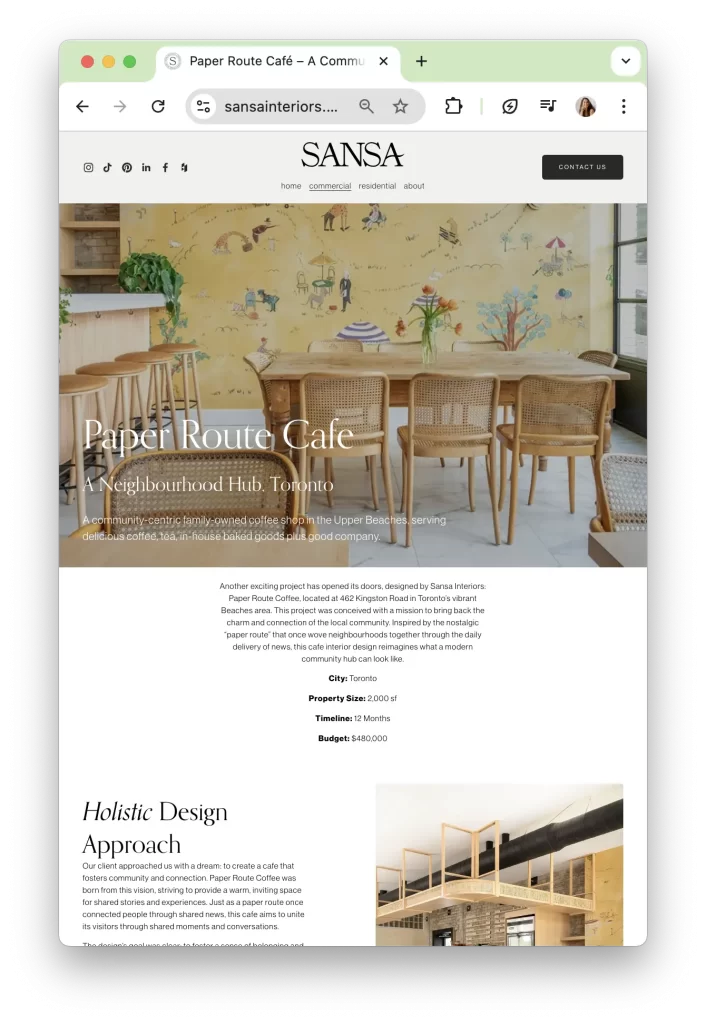Quick Summary
Many designers and builders rely on blog posts filled with SEO keywords—but they rarely bring in quality leads. A better option? Case studies. They not only showcase your portfolio in a meaningful way but also tell the story behind each project—what was done, how long it took, and the challenges solved. Plus, case studies can still be optimized for search, helping your work get found by people searching for exactly what you do. Done right, they build trust and position your firm as a leader in your niche or city.
→ Enjoyed reading this? Join the email newsletter.
There’s a piece of digital marketing advice I’m officially tired of:
“Write blog posts just for SEO.”
You know the ones. Crammed with keywords and filled with superficial DIY tips. Ugh. Sure, they might drive traffic. But traffic isn’t the same as trust. Or qualified leads. Or dream clients.
Don’t get me wrong … I do think every business should be marketing their work.
And if there’s only one thing you publish this year, make it a case study.
It’s a much better way to share your work than a DIY-keyword-jammed blog post.
Case studies > photo galleries
As a design and construction firm, your portfolio is the epicentre of your marketing. The projects you do today attracts the work you get tomorrow.
Yet most of your portfolios stop at photos. Photos, Filomena, are limited.
Photos show the finished space while case studies tells us the story behind it.
Case studies tells us if you teared down the wall or furnished the room. It tells us if it took 3 months or 12. Things a photo gallery simply can’t communicate on its own.
A real-world example
Here’s an example of how our client Sansa Interiors did it:

This case study is broken down into 8 sections:
- Project Name
- Paper Route Café in Toronto
- Overview
- 2,000 sq ft, $480K budget, 12 months
- Design Approach
- Before & After Photos
- Three Challenges
- Client Testimonial
- Photo Gallery
- Call to Action
If you want to create the same, use our wireframe.
Why it works
A case study builds trust, shows how you think, and makes it easier for potential clients to say, “That’s exactly what I need.”
But here’s the best part: it can still be optimized for SEO.
That means this case study drives traffic and quality inquiries from strangers on the internet looking for similar work (that is, “cafe interior design Toronto”).
Let me explain.
Unlike photo galleries, case studies give you breathing room to use keywords tastefully. And if you publish a few around the same niche or location, search tools like Google, Bing and ChatGPT start recognizing you as a topical authority. (I wrote about getting inquiries from ChatGPT a few emails ago.)
That’s how your work gets found by strangers searching for exactly what you do. Like I said earlier, today’s work attracts tomorrow’s projects.
And if writing isn’t your strength? That’s okay. Case studies are just a form of storytelling. You can make a video like Maytree Studios in Australia, design a visual carousel or hire us (wink, wink).
All of this takes time so choose the path of least resistance. Otherwise, you’ll dread it, never share any of your work and wonder why business is so quiet.
See you next week,
Daniela




